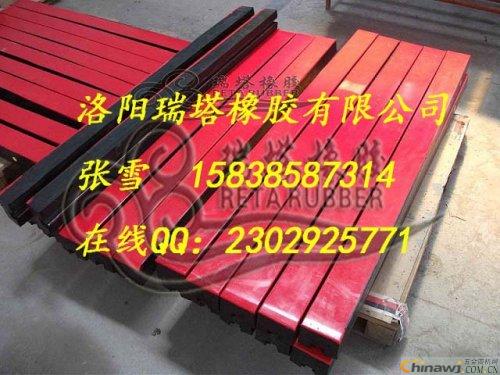1. The Quality of Rubber
The main factor affecting the quality of buffer strips is the rubber used. However, in the domestic market, there's a significant price difference between buffer strips, largely due to the variation in the type of rubber used. This directly leads to a wide gap in product quality and pricing.
When subjected to oblique cutting forces, the buffer strip relies on its own rubber elasticity to absorb the impact. Unfortunately, there is no unified national standard for testing or implementing the performance of buffer strips, which has led to a confusing and inconsistent market.
2. Bonding Strength
Bonding strength isn't visible from the surface, making it one of the most frustrating issues for users. It can only be detected during actual use, a phenomenon known internationally as "peel strength."
To accurately measure bonding strength, specialized equipment is required, which makes it difficult for manufacturers to guarantee consistent performance. In many cases, the actual bond strength doesn't meet international standards. Additionally, only a few domestic manufacturers have mastered the advanced thermal vulcanization technology needed to ensure strong adhesion.
3. Connection Methods
In China, connection methods are generally divided into two types: aluminum alloy structures and steel connections. Aluminum alloy structures, which were considered outdated in Germany during the 1970s and 1980s, are prone to causing the buffer strip to sway, reducing stability and safety. Steel connections, on the other hand, are more durable but still have limitations.
Rita Rubber mainly uses the steel connection method, while in China, aluminum alloy structures are not allowed underground due to the high reactivity of aluminum, which poses potential safety risks.
4. Common Misunderstandings
Many users misunderstand the functions of flame-retardant and anti-static buffer strips. These types of buffer strips typically include flame-retardant or anti-static agents between the wear-resistant layer and the rubber, which results in a black color. Therefore, choosing a manufacturer that can provide test reports—such as Rita Rubber—is essential to ensure real quality and safety.
5. Quality of the Wear Layer
The wear-resistant layer is usually made of ultra-high molecular weight polyethylene (UHMW-PE). The molecular weight of this material significantly affects the performance of the buffer strip, including wear resistance and impact resistance.
Rita Rubber uses specific materials designed for underground use, which differ from those used by general manufacturers, resulting in superior quality and longer service life.


Jiangyin Suofei Electronic Technology Co.,Ltd. , https://www.suofeiscales.com